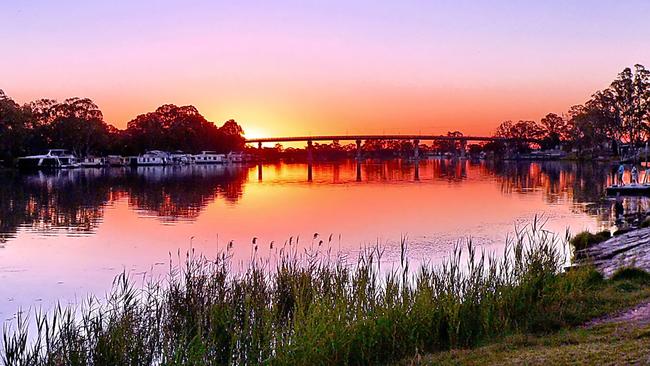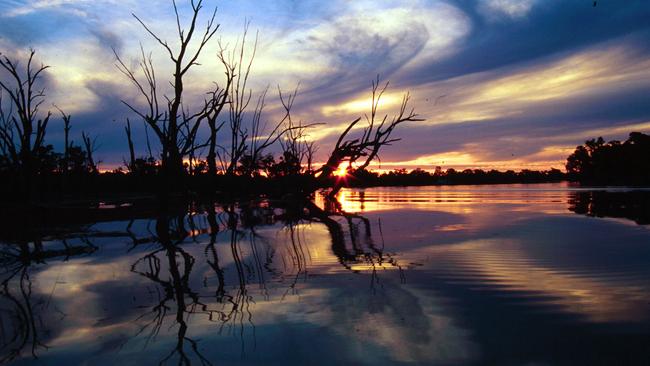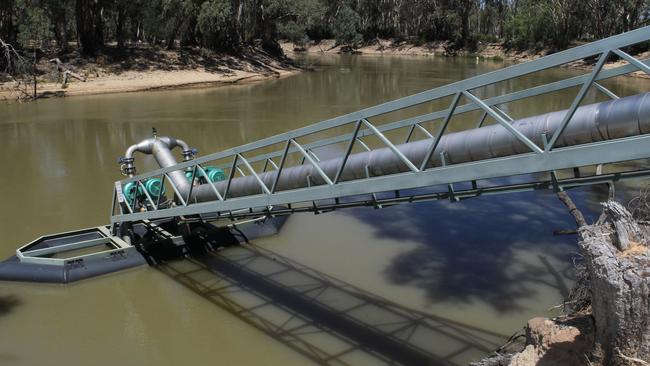Murray-Darling Basin plan explained, as talks over water allocation resume in Parliament
IT’S been murky Murray mayhem for months. With “constructive” talks on the Basin Plan resuming, we explain what the plan is — abnd why it’s falling apart.
SA News
Don't miss out on the headlines from SA News. Followed categories will be added to My News.
- Water figures ‘changed without explanation’
- Labor and Greens to vote against changes to plan
- Murray-Darling Basin Plan ‘failing, must be put on hold’
A TENTATIVE peace has broken out between the two major parties over the Murray-Darling Basin Plan.
Tensions between the Federal Government and the Opposition were rising over legislation to change parts of the plan, allowing irrigators to use more water. Labor was likely to band with the Greens to overturn the legislation.
Some expected the disallowance motions to come to a vote yesterday, but instead the parties started talking.
Opposition water spokesman Tony Burke wrote to Water Minister David Littleproud seeking assurances that the Government would “work constructively” on delivering the plan – including 450 gigalitres for South Australia. Mr Littleproud committed to work “constructively” with Labor.

What is the Murray-Darling Basin?
The Murray-Darling Basin is the catchment for Australia’s biggest river system. It stretches across vast swathes of Queensland, NSW, Victoria and South Australia. It is more than one million square kilometres, where all the streams and creeks and rivers eventually join up to flow out to sea — at the Murray Mouth, near Goolwa.
The Basin includes an amazing ecosystem, and for SA it includes the River Murray, the fragile Coorong, and the Lower Lakes as well as the Mouth.

So what’s the Basin Plan?
For more than a century, the states have been trying to work out a unified way to manage the system, protecting both communities and the environment. The Millennium Drought (2001-2009) brought things to a dramatic head.
Flows into SA from the upstream states almost stopped. Irrigators and communities faced devastating restrictions, the Lower Lakes started drying up, the Coorong got so salty animals and plants started dying, and the Murray Mouth almost closed over completely. A new plan was needed.
There was much negotiation over how much water was needed to save the system — the Greens fought for an original target of 4000GL per year to be recovered from agriculture and returned to the river. Parliament settled on 2750GL, with an additional 450GL for SA.
In 2012 the then-Water Minister, Labor’s Tony Burke, ushered the $10 billion Plan through Parliament with bipartisan support.
But if everyone agreed, why is it now falling apart?
The plan is long-term — the 2750GL is to be recovered by 2019, the 450 by 2024. And it has flexible bits that can be changed, if the evidence or the technology (or the political environment) changes. There are two particular flexible bits that have riled up all sides in recent weeks because the Government legislated them but the Senate can potentially gazump it.

Northern Basin Review
1 a) The review was carried out last year and found that the amount to be recovered from the north should be reduced by 70GL. Saving water there has cost jobs. The Murray-Darling Basin Plan says the same environmental outcomes can be achieved with less water, and while saving 200 jobs. That 70GL upstream only delivers about 4GL to SA, so not such a big deal. Right?
1 b) Wrong. Some people think it’s a very big deal. A group of prominent Basin scientists say the science is dodgy, and that the environmental outcomes are not and will not be delivered. Meanwhile, the Greens and Labor say there is not enough transparency about the review and they are threatening to overturn it.
Sustainable Diversion Limits
2 a) The Sustainable Diversion Limits adjustment means 605GL can be “delivered” through efficiency projects; so the Government for example will pay a farmer to install a water-saving watering system rather than directly buying it for the river.
Again, there are concerns about how that water saved would be measured.
South Australians are worried that if the other states get their wish of dropping 70GL off the northern Basin and adjusting the SDL, they might just walk away from the rest of the Plan. And the rest of the Plan is the 450GL for SA.

So what happens next?
Much depends on what happens in Parliament with the votes to disallow the NBR and the SDL.
If Labor (and NXT, and the Australian Conservatives) vote with the Greens to overturn those bits of legislation, there’s a very real chance that Victoria, NSW and Queensland will say “Bugger the plan”.
A huge setback. It also means the Government’s legal obligation reverts to the 2750GL so SA could miss out. If Labor makes a deal with the Government and lets the legislation stand, there’ll be a huge outcry about the bigger states selling out SA because of that fear the other states will pull out later. But the Plan will stand.
So if it stands, will it work?
The Plan is there to help both the environment and the communities. We need to look after the fish and the farmers. It’s in everyone’s best interests to keep it afloat. But some people think the best way to do that is to chuck the fish or the farmers overboard.


